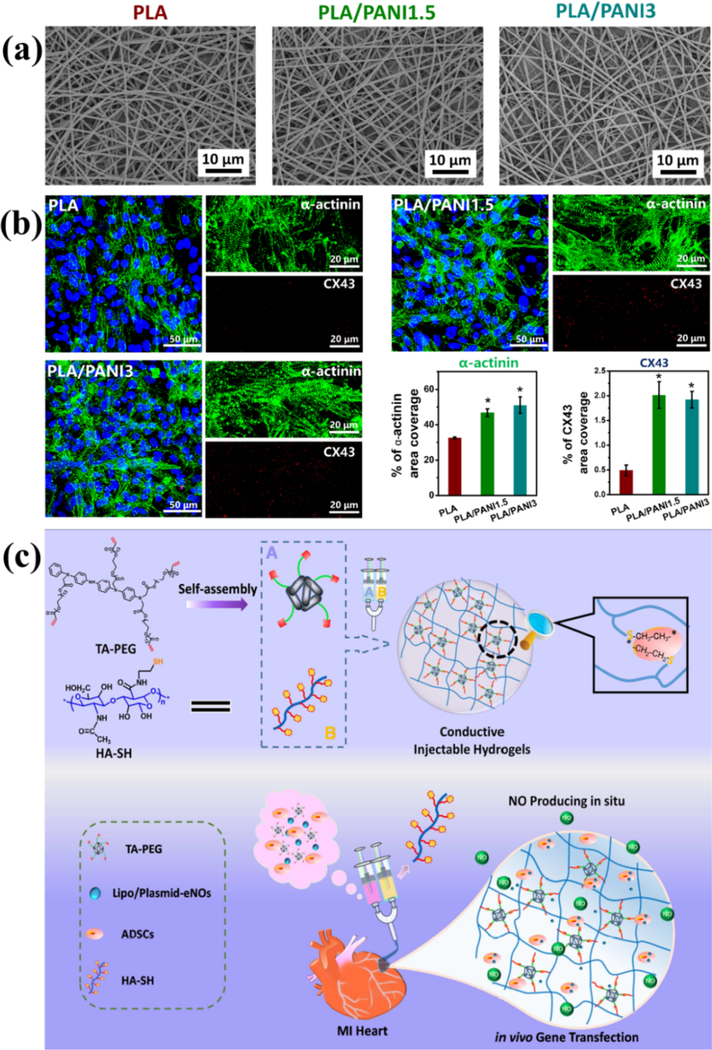Figure 11.
(a) SEM images of PLA/PANI nanofibrous sheet with different PANI concentration including 0 wt% (PLA), 1.5 wt% (PLA/PANI1.5), and 3 wt% (PLA/PANI3). All the nanofibers showed similar nanofiber size. (b) Representative fluorescence images of primary cardiomyocytes immunostained for sarcomeric α-actinin (green) and connexin-43 (red) on different nanofibrous sheets after culturing for 8 days. The area fraction of α-actinin and CX43 were also analyzed. *P < 0.05. Reprinted from reference 50, Copyright (2017) Acta Materialia Inc., with permission from Elsevier. (c) Scheme demonstrates a new conception to construct an injectable conductive hydrogel, which is used to encapsulate plasmid DNA-eNOs nanoparticles and ADSCs to treat MI. The conductive hydrogels promoted the electrical communications to restore the functions of heart. ADSCs loaded in hydrogels were injected into the infarcted myocardium to compensate the cell loss after MI, and the upregulated eNOs expression enhanced neo-vascularization and the maturation of myocardium. Reprinted from reference 146, Copyright (2018), with permission from Elsevier.

